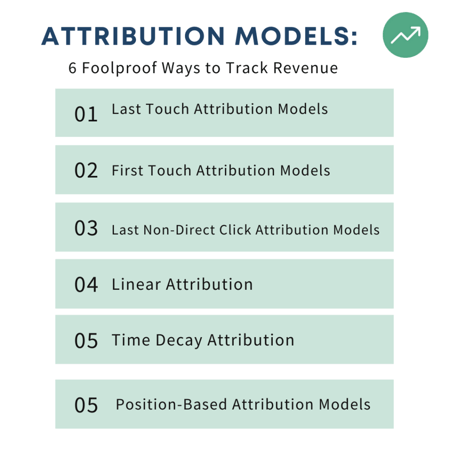Attribution Models: 6 Foolproof Ways to Track Revenue
Have you ever been lucky enough to successfully convert a visitor into a customer by using your ad or blog? That's an example of marketing attribution models.
However, to convert your visitors into customers is a once in a blue moon luck factor. Nowadays, people visit your site and do a deep scan by visiting it more than twice before becoming a buyer.
People find your blogs and then return a few days later, followed by clicking a retargeting ad in the following days, and after a while, they finally convert into customers. But the question is, how did they convert? Which marketing channel made this possible?
This question could be answered by checking different marketing attribution models that help make this possible. Let's learn about the marketing attribution models today.
Marketing Attribution Models: All About It
Attribution modeling a structure of workflows helps analyze the marketing channels, also known as touchpoints, responsible for receiving the credit for visitor conversion. Every attribution model has different values of conversion spread around each touchpoint.
A marketing model comparison tool will help you analyze how every model distributes the value of converting visitors into a customer.
Marketing attribution models help analyze how much ROI each marketing channel induces. The marketing attribution models are:
- Last Touch
- First Touch
- Last Non-direct Click
- Linear
- Time-Decay
- Position-Based

Last Touch Attribution Models
Last Touch Attribution is also known as Last Interaction Attribution.
As the name suggests, Last Touch Attribution considers and values the last interaction your visitor had with your business that helped convert him into a customer.
For instance, when a visitor randomly finds you on google through organic search. But a few days later, they see an ad placed by your business and end up clicking it. This click redirects them to your web page, where they are most likely to make a purchase.
The Last Touch Model is one of the simplest models. It is easy to use, but the evaluation process is much more straightforward than the other models. It gives accurate outputs. Online marketing has different areas, and people have various means to access your webpage. Knowing where the journey started and how it went is challenging. But knowing the last point or the last Touch is easier.
However, a drawback of this model is that it ignores everything that takes place before the last Touch, hence making it difficult to evaluate the weak points.
First Touch Attribution Models
First Touch or First Interaction Attribution is the same, and the Last Touch Attribution with slight changes of placements. The first Touch caters to your visitor's first interaction with your brand, giving credit for converting visitors into a customer to the first interaction.
For example, if a visitor sees you on Dribbble, the conversion credit goes to Dribbble.
This method is very straightforward with no complexity of "what the visitor went through while deciding to convert." It only considers and credits the first interaction. However, First Touch Attribution does not assume any effects later in the journey, ignoring any possible potential marketing channel aspects.
Last Non-Direct Click Attribution Models
This Attribution Model is much more helpful than the Last Click Model, where a single interaction is considered and given value. In Last Non-direct Click, it does not value any direct interaction that happens before the conversion.
This means direct traffic, i.e., when a visitor directly and manually visits your web page. This indicates that the visitor is already aware of your company.
However, in the Last Non-direct click, you can eliminate the direct traffic and assign value to the marketing channel that helped in the conversion. This could mean asking, "how did the visitor end up on your website?"
Linear Attribution
Linear Attribution Model helps divide the area of credit for conversion between all kinds of interaction that a visitor had with your business; equally and justly.
For example, if your customer found you through Facebook and is then directed to Instagram and later joins the email list, they will make the purchase.
There are three different points involved, and the credit will be equally divided amongst all three in equal percentages.
This approach gives a better, more balanced path towards your marketing strategies. It is straightforward and easily understood by the clients.
However, equally distributing the credits to all touchpoints also means neglecting the more important strategies that are more effective than others.
Time Decay Attribution
Like Linear Attribution, Time Decay Attribution spreads the credit to multiple events while also considering how and when each touchpoint occurred.
In this case, interactions that occurred near the time of purchase are given more value.
This Attribution helps in building better relationships with the customers. However, it is most beneficial only in long sale cycles.
Position-Based Attribution Models
Also known as U-shaped Attribution, this Attribution divides the credit between the first and last interactions.
Equal credits are given to each point while the remaining leftover credit is spread out between any interactions in the middle.
For instance, a visitor sees your post on Instagram and then visits your Facebook page, followed by later signing up for the email list. The first touchpoint and the last touchpoint would get 40% of the credit, whereas the middle touchpoint would get 20%.
If your business has multiple touchpoints, this Attribution should be your first choice.
Takeaway on Attribution Models
These attributions will help you understand which strategies and activities help your business convert visitors into customers. Depending upon your business size, each attribution model can assist you in some way or the other.